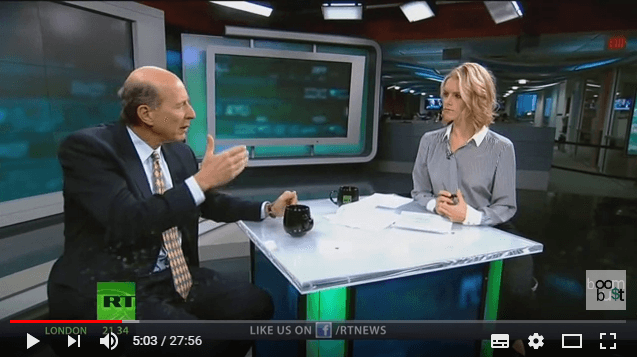Here’s a nice Tom Palley interview from yesterday with Erin Ade for the program Boom Bust where he touches on various economic issues of recent years for the United States and consequently for the rest of the world such as the global race to the bottom.
(h/t Matias Vernengo):
click to watch the video on YouTube
The interview points out the different meaning of what Keynesianism is and ought to be. In particular, it talks of the word stagnation and Palley points out that this phrase is not new and only recently have Paul Krugman and Larry Summers realized the importance of it.
As you may be aware, Joan Robinson used the phrase Bastard Keynesianism to describe the Samuelson et. al.
Incidentally, just today I read Joan Robinson’s article Full Employment And Inflation (originally a lecture from 1958 and published in her Collected Economic Papers, Vol II) where she talks of stagnation:
Formerly economic theory drew a very flattering picture of the private-enterprise system. It was depicted as a beautiful machine with delicately-balanced interacting parts and with a self-righting mechanism that ensured that it kept itself in balance. Full employment of labour was regarded as a normal state of affairs and stability in the value of money taken for granted. Equilibrium in international trade only required the abolition of tariffs and the maintenance of the gold standard. Any departure of actual developments from the ideal equilibrium was regarded as due to frictions which the operation of the machine would overcome by itself, or were attributed to the stupid interference of governments which were often foolish enough to depart from the strict rule of laisser-faire.
All this was shattered by experience in the inter-war period of massive unemployment and chronic crisis. A new theory was formulated by Keynes in place of the discredited orthodoxy. He showed that there is, in fact, no self-righting mechanism in a laisser-faire system. Periodic crises and chronic stagnation are quite natural and to be expected in an unregulated system, and the maintenance of full employment requires a strong and active government policy.
The Bastard Keynesians on the other hand, in the guise of “Keynesianism” simply ignore all this and in fact their views are quite the same as Robinson talks of in the first paragraph of the above quote. Of course in recent times, economists such as Krugman have changed a bit but finally their view of the world is still Samuelsonian or Pigouvian (in spite of the fact that Krugman did a mea culpa recently on this).